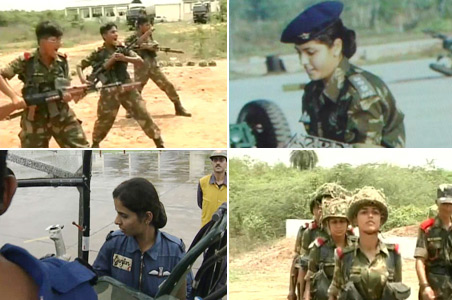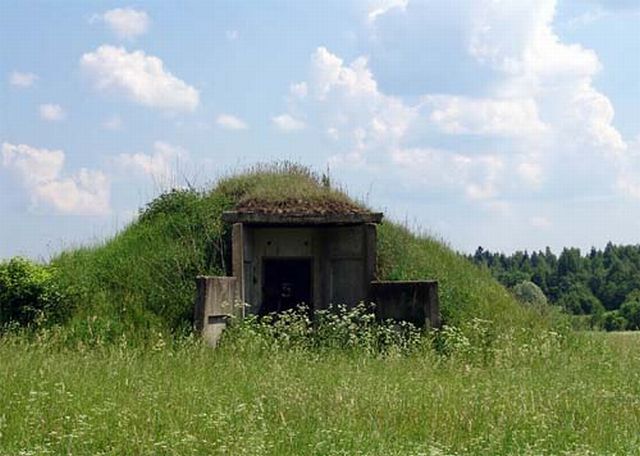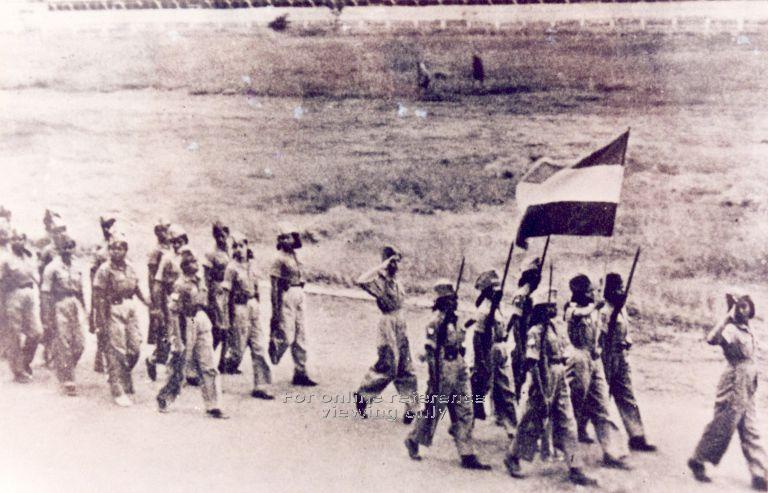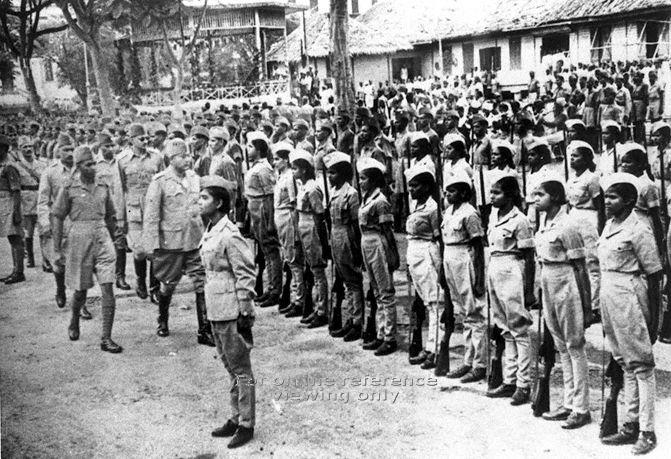Insurgencies in Manipur: politics & ideology
Insurgencies in Manipur: politics & ideology
M. S. Prabhakara, January 28, 2010
TROUBLED TIMES: Policeman look at the debris of a bomb at Hatta Munuthong near Commando Complex in Imphal on Monday. Three blasts took place almost simultaneously on the eve of Republic Day celebrations in Manipur. Photo: PTI
Every time one travels to Manipur, one returns humbled. This has been the case since my first visit in the late 1960s, long before becoming a journalist. Active insurgency was not even on the horizon then though some resentment against ‘India’ was evident. Between 1983 when I joined this paper and mid-1994, I visited the State at least once every year — more than once during some years. In the last eight years I have returned four times. The feeling of inadequacy to confront and understand the complex situation in Manipur, the whys and wherefores of the insurgencies (the plural is advisedly used), the resilience of the ordinary people whose amazing creative energies thrive in the midst of all the pain and violence manifest in every walk of life, has only increased.
Thirty-eight years ago, on January 21, 1972, Manipur became a full-fledged State of the Indian Union. The status was conferred belatedly and grudgingly, a most underwhelming gift. In the popular perception, this was no big deal. Manipur in its historical imagination was an “independent kingdom” since 1st century AD. Its people had ‘histories’ and ‘memories,’ longer and deeper than those of most other Indian people when India attained independence. The use of the plurals is necessary, for this historical imagination is not commonly and equally cherished by all the peoples of Manipur. While the Meiteis, the majority inhabiting the Imphal Valley, shares these histories and memories, the peoples in the outlying Hills cherish other memories, other histories.
In reality, Manipur ceased to be an “independent kingdom” in 1891 when, following the killing of some officials — who were part of the British official presence — with the connivance of the Manipur court, Britain took over the Kingdom after a brief war. The Battle of Khongjam, a major battle in the conflict, is even now officially commemorated every year on April 23. Another day connected with the war, August 13, 1891, when two leading participants, Thangal General and Tikendrajit Juvaraj, were hanged in public in the heart of Imphal, is commemorated every year as Patriots’ Day.
This is only one instance of the appropriation of one kind of historical imagination by the modern State of Manipur whose very legitimacy is challenged by persons and organisations that claim to be the true inheritors of that history and cherish another kind of historical imagination — the insurgencies in the Imphal Valley that seek to restore the sovereign status of Manipur.
The defeat at the hands of Britain came to be accepted as part of British India’s expansion to secure its eastern frontier in which the independence of Manipur became an inescapable casualty. The fact that Britain did not annex the Kingdom, as was done in the case of Assam in 1826 after defeating Burma that had invaded and ravaged Assam, also helped in the acceptance of the fiction that Manipur remained an independent kingdom, albeit under British protection. The reality was that Manipur was, for all practical purposes, just another native State with its administrative and political control limited to the Valley, with Britain administering the outlying Hill areas inhabited by tribal people. The subordinate status of the “independent kingdom” was further underlined by the presence of a British Resident.
At the time of Independence, however, some of the resentment that had remained dormant came to the fore, now that a local elite with the potential to intervene more actively was to become the successor authority in Delhi.
Two developments added to this renewed resentment, while the cherry on the top has been the virtual militarisation of the administration whose defining element is the terrifying Armed Forces Special Powers Act (AFSPA). First, the circumstances under which the annexation/merger of Manipur into the Indian Union was achieved — or manipulated. These did little credit to any of the participants in that squalid drama. Following the anti-feudal struggle led by the Manipur Mahasabha, among whose leaders was the legendary communist Hijam Irabot Singh, Maharaja Bodhi Singh set up a committee to draft a Constitution in March 1947. The Constitution was adopted in July 1947. Thus when the transfer of power took place in Delhi, Manipur became an independent country under a constitutional monarchy, with a Constitution of its own that provided for universal adult franchise.
Indeed, the developments between the adoption of that Constitution and the annexation/integration of Manipur into the Indian Union on October 15, 1949 — as part of the process of ‘Integration of Indian States’ — even now rankle in the historical imagination of the people, in particular the Meiteis. The resentment has been a crucial element in the ideology and politics that have animated the insurgencies in the State, though quite different perspectives of sovereignty linked to the Naga national imagination, whose first eloquent articulator was A.Z. Phizo, lie at the root of the Naga insurgency in the Naga-inhabited areas in the Hills.
There is a sub-text to this anti-feudal struggle that has contributed to the resentment as articulated by the more ‘radical’ of the insurgents. In parts of India, especially in those States where feudalism was most oppressive, the CPI was engaged before and after the transfer of power in militant anti-feudal struggles which in some instances, as in Telangana in Hyderabad state, became armed struggles. The participation of Irabot Singh in the anti-feudal struggle in Manipur which never became an explicit armed struggle, though the authorities were apprehensive over such a possibility, has to be seen against the larger background in which the CPI was a leading player.
When the CPI-led armed struggle persisted in Telangana even after the transfer of power, it was ruthlessly crushed. Eventually, the CPI abandoned the line and approach adopted by it, followed by significant changes in its leadership to indicate that the party had forsworn its earlier view.
In Irabot’s case it was never clear if he saw the struggle against feudalism in Manipur as part of a larger ‘armed struggle’ to secure ‘independence’ for Manipur. According to Noorul Huda, veteran communist leader of Assam who was closely involved in the political developments of those days in Manipur, “there was no evidence of Irabot opposing the merger agreement of 15 October 1949.” However, in a strange reconstruction of historical imagination, Irabot is being appropriated as an icon of the separatist armed struggles for Manipur’s independence.
Two, the formalisation of the ceding of the Kabaw Valley, always viewed as an integral part of Manipur, to Burma, though Burma had been in de facto control of the territory as part of the truce negotiated after the Anglo-Burmese war of 1826. The final humiliation was the ‘gifting away’ of the territory to Burma by Jawaharlal Nehru in 1953, during Prime Minister U Nu’s visit to India.
The resentment over the formalisation of an arrangement that had been in existence since 1834 — when the territory of the Kabaw Valley was leased to Burma — 120 years later, may seem strange. However, it was natural when viewed in the context of anxieties over the ‘territorial integrity’ of the State, most dramatically demonstrated by the “ June 18, 2001 uprising” in the Valley to protest against the extension of the ceasefire agreement with the NSCN (I-M) to Manipur. This again is an issue that evokes quite different responses among the majority and the minority population of tribal people inhabiting the five ‘outlying’ districts – Chandel, Churachandpur, Senapati, Tamenglong and Ukhrul.
While the historical imagination as evoked by the Valley-based insurgencies sees Manipur as an independent state, with its present territory intact, and with the Kabaw Valley at some point in the future incorporated into the motherland, the historical imagination and the territorial imperative of the Naga insurgency necessarily involves the disintegration of the present territory of Manipur.
The totality of these perspectives, involving conflicting constructions of the historical imagination covering the last 60 years, animates the ideology and politics of the Valley-based insurgencies in Manipur, that its people have been “at war with India” since 1949.
http://beta.thehindu.com/opinion/lead/article95770.ece







